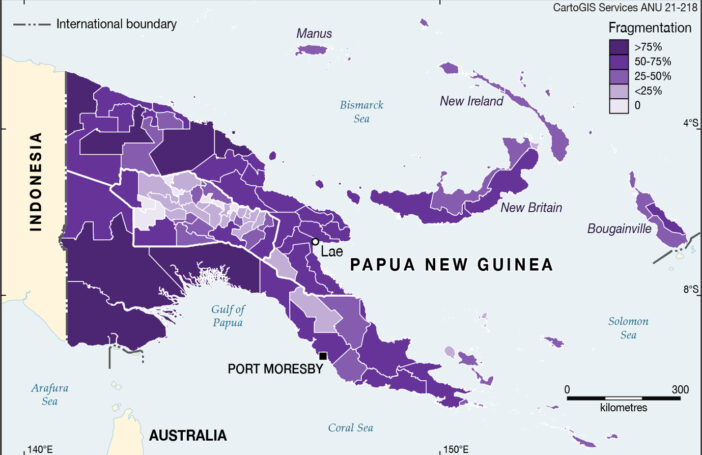Abstract:
In the first discussion paper in this two paper series, Filer and Wood (2021) derived two measures of human well-being from the 2000 national census and sought to establish the relative strength of their association with 12 geographical variables in a comparative study of the 85 partially rural districts of Papua New Guinea. In this paper, we seek to compare the relative significance of these geographical variables and a smaller range of institutional variables for which we have been able to secure reasonable robust measures at a district level. We find that the degree of linguistic diversity or ‘ethno-linguistic fragmentation’ is quite strongly associated with a high level of child mortality, but is not associated with low levels of school attendance. Other institutional variables are only weakly associated with one or other of these two dependent variables, once the more significant of the geographical variables are taken into account. We conclude with a discussion of several issues that need to be taken into account in an interpretation of these findings.
This is the second discussion paper in a two paper series involving district-level analysis of human well-being in Papua New Guinea. See also: Colin Filer and Terence Wood, 2021, Geographical Constituents of Human Well-being in Papua New Guinea: A District-level Analysis, Development Policy Centre Discussion Paper No. 92.
Suggested citation:
Filer, C., Fraenkel, J. & Wood, T. 2021, ‘Institutional constituents of human well-being in Papua New Guinea: a second district-level analysis’, Discussion Paper No. 95, Development Policy Centre, Crawford School of Public Policy, Australian National University, Canberra.

